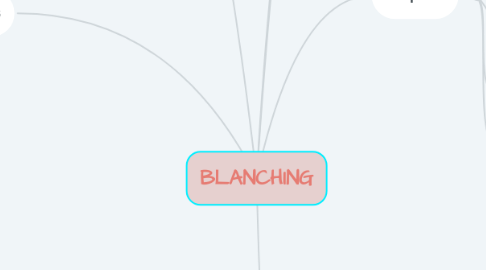BLANCHING
by Aena Muhamad


1. Steam Blanching
1.1. Large area of cut surfaces (small food)
2. Hot water Blanchers
2.1. 70-100°C
2.2. 1) Pre-heating stage 2) Blanching stage 3) Cooling stage
3. Advantages
3.1. smaller lost of water-soluble components
3.2. smaller volumes of waste
3.3. lower disposal charges than water blanchers (Air cooling instead of water)
3.4. Easy to clean & sterilise
4. Disadvantages
4.1. Limited cleaning of the food (requires washers)
4.2. Uneven blanching
4.3. Loss of mass in the food
5. Advantages
5.1. Low capital cost
5.2. Energy efficiency than steam blancher
6. Disadvantages
6.1. High cost in purchase of water
6.2. Charges for treatment of large volumes of dilute effluent
6.3. Risk of contamination by thermophilic bacteria
7. Mild heat treatment <100°C
7.1. 1 to 5 minutes
8. Purpose
8.1. Inactivate Enzyme
8.1.1. Heat resistant enzyme
8.1.1.1. -Catalase -Peroxidase
8.2. Enhance drying and dehydration
8.3. Remove tissue gasses
8.4. Soften the food
8.4.1. To facilitate filling into containers prior to canning.
8.4.2. Calcium Chloride (1-2%) added to blancher water to form insoluble calcium pectate complexes -- Maintain firmness of the tissues.
8.5. Reduce microbial load
8.6. Enhance color of green vegetables
8.6.1. Sodium Carbonate (0.125% w/w) / Calcium Oxide often added to blancher water to protect chlorophyll & retain color of green vegetables.
9. Factor influence Blanching time
9.1. Type of fruit/vegetable
9.2. Size of the pieces of food
9.3. Method of blanching
9.4. Blanching temperature
10. Nutrients
10.1. Vitamin loss factors
10.1.1. 1. Maturity of food and variety
10.1.2. 2. Method used in preparation ( cutting/slicing)
10.1.3. 3. Surface area to volume ratio of food
10.1.4. 4. Time & Temperature
10.1.5. 5. Method of cooling
10.1.6. 6. Ratio of water to food

